I have a similar project where I communicate between services as well as between mobile and desktop with a service.
We use the Authenticode certificate from the EXE file to ensure that it's our binaries that are doing the requests.
On the requesting side (over simplified for the post).
Module m = Assembly.GetEntryAssembly().GetModules()[0];
using (var cert = m.GetSignerCertificate())
using (var cert2 = new X509Certificate2(cert))
{
var _clientHandler = new HttpClientHandler();
_clientHandler.ClientCertificates.Add(cert2);
_clientHandler.ClientCertificateOptions = ClientCertificateOption.Manual;
var myModel = new Dictionary<string, string>
{
{ "property1","value" },
{ "property2","value" },
};
using (var content = new FormUrlEncodedContent(myModel))
using (var _client = new HttpClient(_clientHandler))
using (HttpResponseMessage response = _client.PostAsync($"{url}/{controler}/{action}", content).Result)
{
response.EnsureSuccessStatusCode();
string jsonString = response.Content.ReadAsStringAsync().Result;
var myClass = JsonConvert.DeserializeObject<MyClass>(jsonString);
}
}
I then use the following code on the action that gets the request:
X509Certificate2 clientCertInRequest = Request.HttpContext.Connection.ClientCertificate;
if (!clientCertInRequest.Verify() || !AllowedCerialNumbers(clientCertInRequest.SerialNumber))
{
Response.StatusCode = 404;
return null;
}
We rather provide a 404 than a 500 as we like those that are trying URLs to get a bad request rather then let them know that they are "on the right track"
In .NET Core, the way to get the certificate is no longer by going over Module. The modern way that might work for you is:
private static X509Certificate2? Signer()
{
using var cert = X509Certificate2.CreateFromSignedFile(Assembly.GetExecutingAssembly().Location);
if (cert is null)
return null;
return new X509Certificate2(cert);
}
